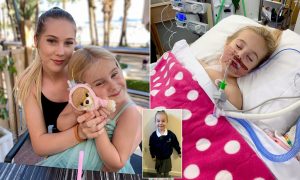I have so many Larry stories that I’d probably get sued now that he’s a big shot.
 But when I was teaching him and Kevin, about 1995 (I may have noticed Chapman joined my lab about 1999, it’s all a purple haze, but I got those 70 peer-reviewed papers out and made full-professor) so here’s Larry, now that he’s returned to Guelph (that’s in Ontario, Canada) and maybe you have a chat with Malcolm, see about getting my $750,000 returned and we can do some fun research.
But when I was teaching him and Kevin, about 1995 (I may have noticed Chapman joined my lab about 1999, it’s all a purple haze, but I got those 70 peer-reviewed papers out and made full-professor) so here’s Larry, now that he’s returned to Guelph (that’s in Ontario, Canada) and maybe you have a chat with Malcolm, see about getting my $750,000 returned and we can do some fun research.
And I won’t ever tell anyone about Atlanta.
Despite appearances, experts say a recent rise in major recalls is not a sign of food supply problems, but the result of a more active investigative body and better testing tools — though they add more can be done.
“This is proof that the system is working well,” said Lawrence Goodridge, a professor focusing on food safety at The University of Guelph, speaking about the recent meat recall.
Yet, he believes that “in Canada, we have to get to a place where we can actually stop the food from going to retail in the first place.”
Since Sept. 20, a investigation by the Canadian Food Inspection Agency into possible E. coli 0157:H7 contamination in some beef and veal products sold by Ryding-Regency Meat Packers Ltd. and St. Ann’s Foods Inc. has led to the recall of nearly 700 products.
The CFIA suspended the Canadian food safety license for St. Ann’s meat-processing plant, as well as Ryding-Regency’s slaughter and processing plant, both in Toronto, in late September.
No illnesses have been reported in association with the products, according to the CFIA, but symptoms of sickness can include nausea, vomiting, abdominal cramps.
x









